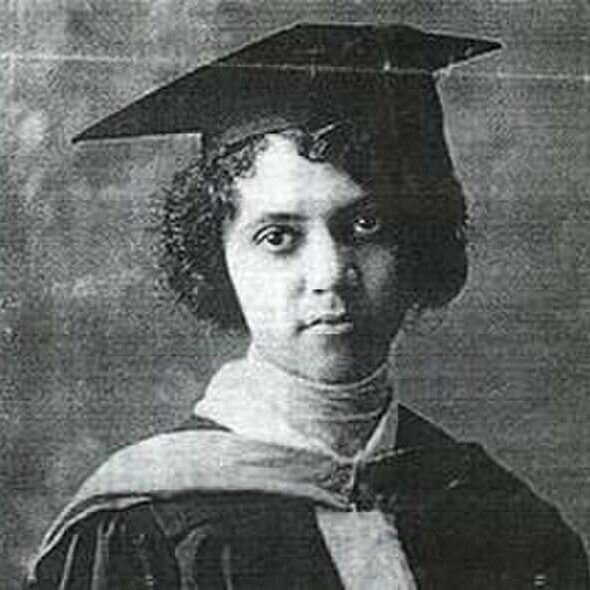
Black woman in STEM
A few of the most accomplished Black women in innovation through science and technology
Women remain largely underrepresented in science, technology, engineering and mathematics (STEM) fields. In the United States, women make up only 34 per cent of the STEM workforce.
Intersectional inequalities can exacerbate this underrepresentation. Latina, Black and Indigenous women make up less than 10 per cent of the STEM workforce in the U.S. This disparity in STEM involvement is not because of differences in abilities and intelligence. Barriers prevent women of colour from not only progressing in these fields but building confidence and a sense of belonging in them.
Often when people imagine what a scientist looks like, studies say they picture a white man in a lab coat. However, it is essential we change our conceptions about who can be a scientist and having diverse role models in science is one approach.
Alice Ball
Alice Ball was a chemist who helped improve the lives of people suffering from Hansen’s disease, or leprosy. This disease is caused by bacteria that can affect the nerves, skin, respiratory tract and eyes. Infected people risk paralysis of the hands and feet.
Ball was born in 1892 in Seattle. In 1915, she was the first woman and Black person to earn a master’s degree in chemistry from the College of Hawai’i (now the University of Hawai’i).
Prior to Ball’s work, leprosy was treated orally or topically with oil from the seeds of a chaulmoogra tree. This treatment worked to a degree, but was inconsistent and had harmful side effects.
Ball worked to create a cure containing the medicinal ingredients of chaulmoogra oil, but could be delivered via injection with minimal side effects. Shortly after her discovery, she died at age 24 from what’s believed to be chlorine poisoning while working in the laboratory.
The president of her college, Arthur L. Dean, continued working on the treatment after Ball passed. Soon, the injections were commercially available and became the main way to treat Hansen’s disease for the following 20 years.
Dean never acknowledged the work Ball contributed to the discovery, besides a brief reference to the process of making the treatment in a medical journal. He dubbed it the “Ball Method.”
While she didn’t receive any credit at the time of the discovery, she posthumously received a medal of distinction from her university. Today, Feb. 29 is Alice Ball day in Hawai’i.
Henrietta Lacks
While not a scientist, Henrietta Lacks made a significant contribution to biology that’s still relevant today. Lacks was a tobacco farmer from the southern U.S. and in 1951, she sought medical treatment at The John Hopkins Hospital. She had cervical cancer and during a procedure, a piece of her tumour was removed and sent to a tissue lab without her knowledge or consent.
This lab had been trying to grow cultures of human cells and the tissue sample from Lacks was the first to propagate and grow instead of dying. These notable cells were named the HeLa cell line, a homage to her name, and have become crucial in studying human cells. Some important applications of the sample have taken place in researching diseases, viruses and the effects of toxins. They were also essential in the development of vaccines for both polio and COVID-19, and are even used in science courses at Dalhousie University!
Despite the biomedical and pharmaceutical advances thanks to HeLa cells, Lacks’s family received little to no attention or financial reward for Lacks’s role. She passed away from her cancer later in 1951. Her identity was not publicly known until the 1970s and her name and medical records were released to the public, without the consent of her family.
There are many discussions about the ethics of further use of the HeLa cell line, but Lacks’s descendants have advocated for its continued use, with the acknowledgement that the cells came from a Black woman with a family and a story. Her family remembers Lacks as a stylish woman who loved to dance and cook, someone who took care of her family and helped those in need.
Gladys West
Gladys West is a mathematician who played a key role in the development of the GPS.
She was born in Virginia in 1930 and grew up on a farm, knowing she wanted to leave farming to pursue higher education. She graduated at the top of her class in high school and was awarded a full scholarship to Virginia State University.
West earned both a bachelor’s and a master’s degree in mathematics, a field historically and currently dominated by men. After doing some teaching work after graduating, West began a job at a Virginia naval base. She was involved in solving mathematical problems and programming computers.
West played essential roles in some important projects during her time in the navy. She was part of a research team that developed a calculator to observe the motion of Pluto relative to Neptune. West was also the project manager of Seasat, the first satellite that could be used to collect data on oceanographic conditions such as water temperature.
West was also crucial in laying the groundwork that allowed for the development of GPS. She and her team programmed a computer that was able to calculate detailed models of Earth’s surfaces and could calculate the movements of satellites. It is this innovation that allows GPS to work around the world.
West continued to pursue education for much of her life. She earned a second master’s degree in public administration when she was 43 years old and at 70, she earned a PhD in public administration and policy affairs.
West is now 92 years old. In 2018 she was recognized by the Virginia General Assembly for her contributions to the development of GPS, as well as being inducted into the Air Force Space and Missile Pioneers Hall of Fame.
Cover: Alice Ball (Wikimedia Commons)






